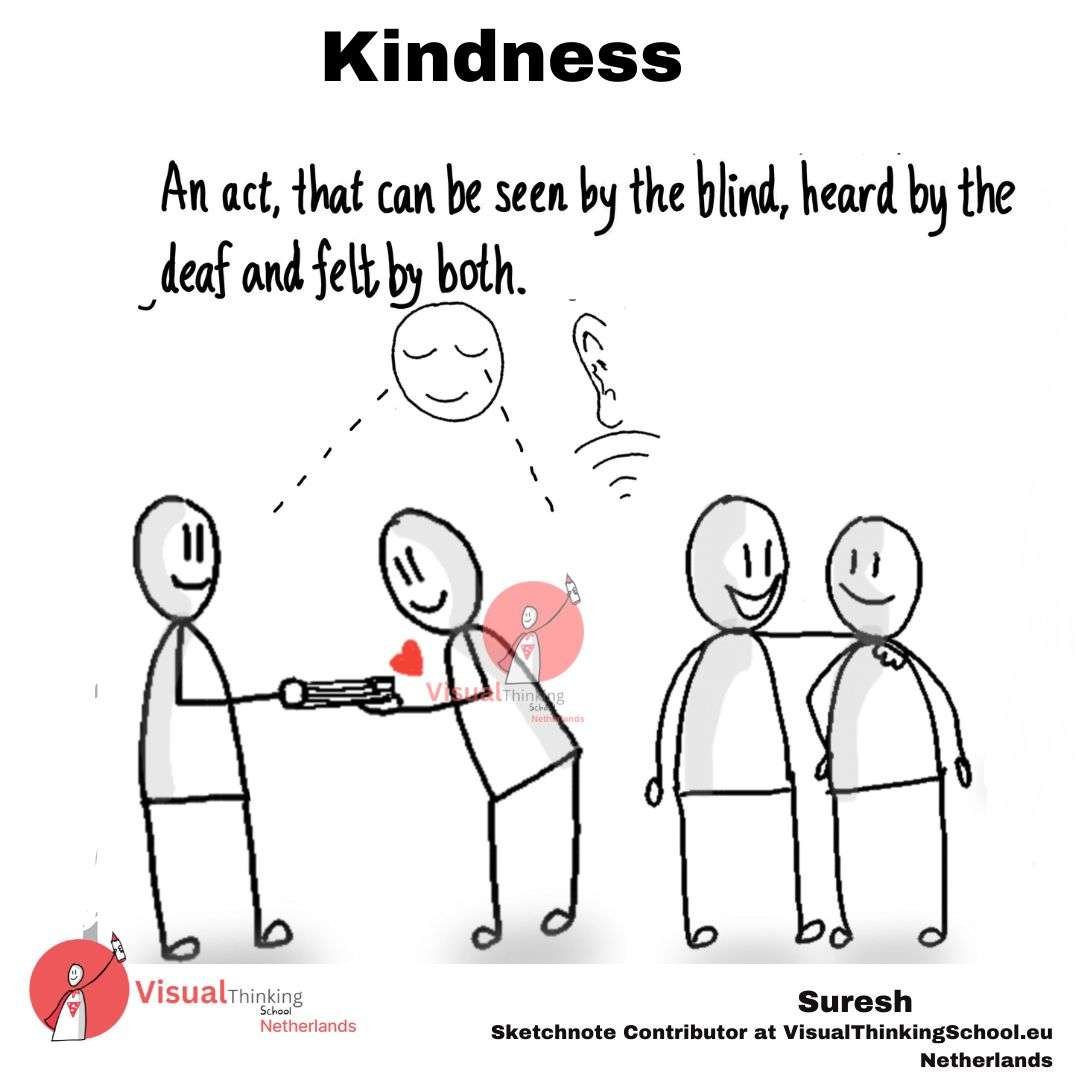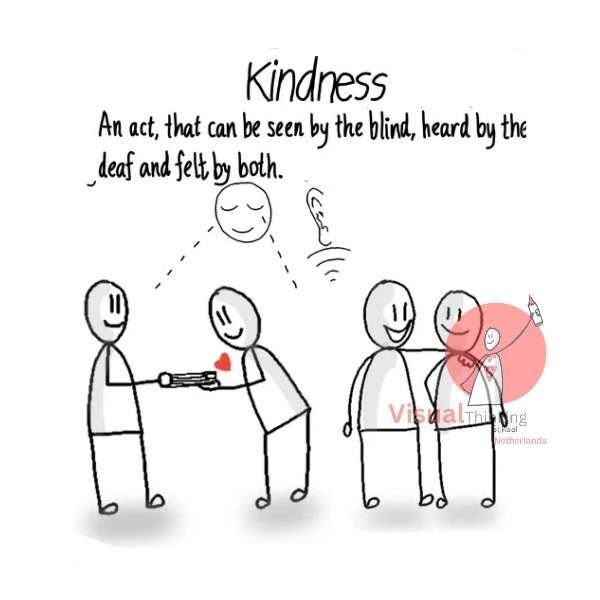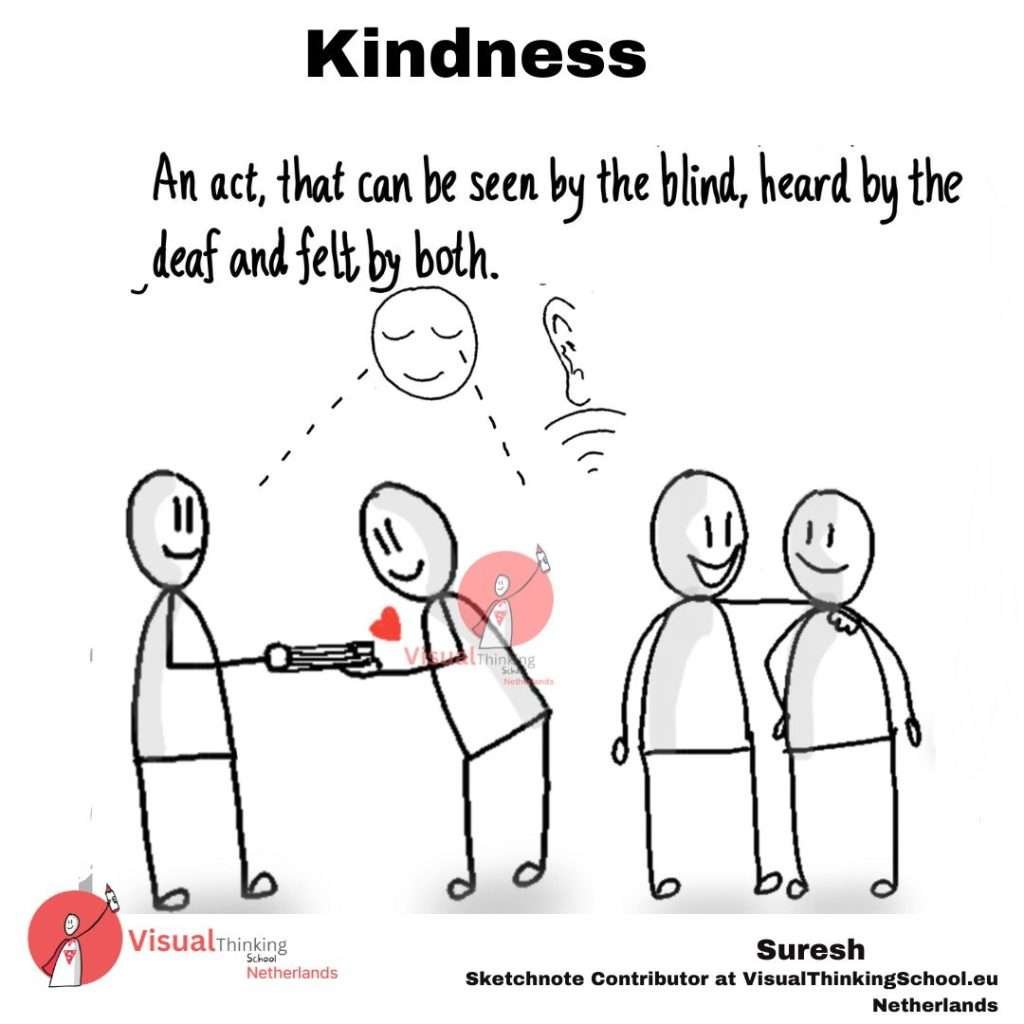
“Kindness: An act that can be seen by the blind, heard by the deaf, and felt by both.”

This profound statement captures the essence of kindness as a universal language that transcends physical limitations and is perceptible through various senses. In a world often marked by division and strife, acts of kindness serve as bridges that connect us all, regardless of our abilities or circumstances. This blog delves into the multifaceted nature of kindness, exploring how it manifests, its impact on individuals and communities, and ways we can cultivate and practice it in our daily lives.
Kindness is an inherent quality of being friendly, generous, and considerate. It is a simple yet powerful act that can take many forms, from a smile to a helping hand, and from a kind word to a selfless gesture. Kindness is not constrained by physical senses; it is a language of the heart, understood by all.
The image illustrates this beautifully, showing how an act of kindness transcends sensory boundaries. The blind can see it, the deaf can hear it, and both can feel its warmth and compassion. This speaks to the profound impact kindness can have, making it a truly universal experience.
Seen by the Blind
For someone who cannot see, kindness can be perceived through actions and intentions. It is the gentle touch on the arm guiding them safely across the street, the voice that speaks with patience and care, and the presence of someone who listens attentively. These actions create an environment of trust and safety, allowing the blind to “see” kindness through the care and consideration they receive.
Heard by the Deaf
For someone who cannot hear, kindness is evident through visual cues and the effort others make to communicate. It is the smile that lights up a face, the sign language used to bridge the gap, and the body language that conveys understanding and empathy. Kindness resonates through the effort to include and connect, making it “audible” to the deaf through actions and expressions.
Felt by Both
Kindness is a feeling that transcends physical limitations. It is the warmth in the heart when someone shows genuine care, the comfort in knowing that one is not alone, and the sense of belonging that comes from being treated with respect and compassion. Whether one can see, hear, or neither, the emotional impact of kindness is universally felt.
1. Start with Yourself: Self-kindness is the foundation of being kind to others. Treat yourself with the same compassion and understanding you would offer a friend. Acknowledge your strengths and weaknesses without judgment, and practice self-care.
2. Be Mindful: Pay attention to the needs and feelings of those around you. Small acts of empathy, like holding the door open, offering a seat, or simply smiling at someone, can make a big difference in someone’s day.
3. Listen Actively: One of the most powerful ways to show it is by truly listening to others. Give them your full attention, acknowledge their feelings, and offer support and encouragement.
4. Volunteer: Volunteering your time and skills to help others is a tangible way to practice kindness. Whether it’s helping at a local shelter, mentoring a young person, or participating in community projects, volunteering allows you to make a positive impact.
5. Express Gratitude: Acknowledging and appreciating the empathy of others encourages a cycle of positivity. Say thank you, write a note of appreciation, or acknowledge the efforts of those around you.
6. Teach and Encourage Kindness: Foster kindness in others, especially in children, by modeling compassionate behavior and encouraging acts. Create opportunities for them to practice kindness in their daily interactions.
To illustrate the profound impact of kindness, here are a few stories that highlight its transformative power:
1. The Kindness of Strangers: In 2017, a woman stranded on a flooded highway during Hurricane Harvey was rescued by a group of strangers who formed a human chain to pull her to safety. This act of bravery not only saved her life but also demonstrated the power of collective compassion in times of crisis.
2. A Simple Gesture: A young boy in New York City started a project called “The Sandwich Club” to make and distribute sandwiches to the homeless. His simple act has inspired many others to join in, creating a community effort to help those in need.
3. Paying It Forward: The concept of “paying it forward” has gained popularity, where individuals perform random acts of kindness with the hope that the recipient will do the same for someone else. This ripple effect has led to numerous heartwarming stories of generosity and goodwill.

It is a universal language that transcends physical and sensory boundaries. It is a force that connects us all, fostering empathy, compassion, and understanding. By embracing kindness in our daily lives, we can create a ripple effect that spreads positivity and transforms individuals, communities, and society as a whole. Let us strive to be kind, knowing that our actions can be seen by the blind, heard by the deaf, and felt by all.
We conduct online and in-person certification trainings on our Trade Marked Training on Business Sketchnotes ™.
We have an open challenge in our trainings : If you can not draw after our 9 hours of trainings, we will close our trainings FOR EVER !! ..and we are still waiting for that one person even after training more than 38000 professionals.
You can also join our whatsapp community to learn from those who have attended our trainings

We trained more than 38000 professional and gave corporate trainings in more than 65+ top notch companies

Check Our Trainings